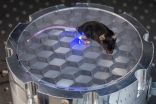(Press-News.org) PROVIDENCE, R.I. - A study conducted by researchers at Hasbro Children's Hospital, Boston Children's Hospital, Fairfax (VA) County Public Schools and the University of Colorado School of Medicine has found that nationally mandated protective eyewear results in a greater than three-fold reduced risk of eye and orbital injuries in high school (HS) girls' field hockey players without increasing rates of concussion.
Each academic year, more than 64,000 girls participate in HS-sanctioned field hockey in the United States. Head, facial, and eye injuries are common among field hockey players, and, occasionally, catastrophic. In 2011, the National Federation of State High School Associations (NFHS) issued a protective eyewear mandate requiring all HS field hockey players to wear protective eyewear in NFHS-sanctioned competitions. However, protective eyewear remains voluntary in non-NFHS sanctioned competitions and other field hockey-related play.
The study, currently online and appearing in the September 2015 print issue of Pediatrics, examined injuries among high school field hockey players 14 to18 years of age two seasons prior (2009-10, 2010-11) and two seasons following (2011-12, 2012-13) the NFHS implementation of a national mandate requiring the use of protective eyewear for all HS field hockey players, effective during the 2011-12 season.
Researchers found that the incidence of eye and orbital injuries was significantly higher in states without mandated protective eyewear (MPE) than in states with MPE (before the 2011/12 mandate) and the post-mandate group. There was no significant difference in concussion rates for the two groups. After the 2011/12 MPE, severe eye and orbital injuries were reduced by 67 percent and severe and/or medically disqualifying head and face injuries were reduced by 70 percent.
"The results of this study support a policy change regarding mandatory protective eyewear in field hockey at all amateur levels, both in practice and competition," said Peter Kriz, M.D., the study's principal investigator and co-author, and sports medicine physician at Hasbro Children's Hospital. "Critics of protective eyewear in field hockey have voiced concerns that the eyewear increases concussion rates due to loss of peripheral vision and increased player-to-player contact. Our study found that concussion rates did not change as a result of the national MPE."
Kriz added, "Other youth sports such as baseball and softball are gradually adopting use of protective facemasks for batters, pitchers and infielders. Just watch how many batters in this summer's Little League World Series tournament now wear a face protector."
"Professional ice hockey has made significant strides in implementing mandated visor use over the past decade," said Kriz. "In comparison, the governing organizations for amateur field hockey remain reluctant to endorse eye protection in amateur elite field hockey. Meanwhile developmental, college and national level field hockey coaches and programs have voiced concern that MPEs will jeopardize international recruitment efforts, as no other country mandates eyewear protection, and hurt the ability of the U.S. national teams to remain competitive internationally."
"We remain hopeful that our study results will persuade the National Collegiate Athletic Association (NCAA) to mandate protective eyewear use among its student athletes," said Kriz. "Additionally, we are hoping to close some of the loopholes which permit middle- and high-school players to participate in games, practices, camps, tournaments and showcases without protective eyewear."
INFORMATION:
Data for this study was collected from the National High School Sports-Related Injury Surveillance System, High School RIO™ (Reporting Information Online) and from Fairfax County (VA) Public Schools Athletic Training Program. The study was funded in part by Prevent Blindness America, the Centers for Disease Control and Prevention, and the National Operating Committee on Standards for Athletic Equipment.
About Hasbro Children's Hospital
Hasbro Children's Hospital in Providence, R.I., a part of the Lifespan health care system, is the premier pediatric facility for clinical care, research and education for Rhode Island and surrounding southeastern New England. A private, not-for-profit institution, it is the pediatric division of Rhode Island Hospital. Rhode Island Hospital is the principal teaching hospital of The Warren Alpert Medical School of Brown University, through which the department of pediatrics brings in $23 million in external research funding annually. Hasbro Children's Hospital is designated as a Level 1 Pediatric Trauma Center by the American College of Surgeons (ACS). The hospital's "All for One" commitment devotes all of its knowledge, experience, and passion for healing to each child in its care. For more information visit http://www.hasbrochildrenshospital.org, follow us on Twitter, like us on Facebook or Pin with us.
Generally speaking, language processing is a job for the brain's left hemisphere. That's true whether that language is spoken, written, or signed. But researchers reporting in the Cell Press journal Current Biology on August 17 have discovered an exception to this rule in a most remarkable form: whistled Turkish.
"We are unbelievably lucky that such a language indeed exists," says Onur Güntürkün of Ruhr-University Bochum in Germany. "It is a true experiment of nature."
Whistled Turkish is exactly what it sounds like: Turkish that has been adapted into ...
Health care is a major responsibility of Canada's federal government and must be a key issue in the fall election, argues Dr. Matthew Stanbrook in an editorial in CMAJ (Canadian Medical Association Journal).
"The federal government seems to be trying to get itself out of the health care business," states Dr. Stanbrook, deputy editor, CMAJ. "It cannot. Many essential aspects of health care are a federal responsibility, and our biggest, most complex problems in the health care system cannot be solved without federal leadership."
He argues that over most of the last 10 ...
Nearly 2 million people throughout the Great Plains and California above aquifer sites contaminated with natural uranium that is mobilized by human-contributed nitrate, according to a study from the University of Nebraska-Lincoln.
Data from roughly 275,000 groundwater samples in the High Plains and Central Valley aquifers show that many Americans live less than two-thirds of a mile from wells that often far exceed the uranium guideline set by the Environmental Protection Agency.
The study reports that 78 percent of the uranium-contaminated sites were linked to the ...
Philadelphia, PA, August 17, 2015 -- Peripherally inserted central catheters (PICCs), a type of IV typically inserted in a vein in the arm, are frequently used by healthcare professionals to obtain long-term central venous access in hospitalized patients. While there are numerous benefits associated with PICCs, a potential complication is deep vein thrombosis (DVT), or blood clots, in upper limbs. A new study of more than 70,000 patients in 48 Michigan hospitals indicates that PICC use is associated not only with upper-extremity DVT, but also with lower-extremity DVT. The ...
CORVALLIS, Ore. - More than 20 million years ago, a short struggle took place in what is now the Dominican Republic, resulting in one animal getting its leg bitten off by a predator just before it escaped. But in the confusion, it fell into a gooey resin deposit, to be fossilized and entombed forever in amber.
The fossil record of that event has revealed something not known before - that salamanders once lived on an island in the Caribbean Sea. Today, they are nowhere to be found in the entire Caribbean area.
The never-before-seen and now extinct species of salamander, ...
Irvine, Calif., August 17, 2015 - A woman's weight at birth, education level and marital status pre-pregnancy can have repercussions for two generations, putting her children and grandchildren at higher risk of low birth weight, according to a new study by Jennifer B. Kane, assistant professor of sociology at the University of California, Irvine. The findings are the first to tie social and biological factors together using population data in determining causes for low birth weight.
"We know that low-birth-weight babies are more susceptible to later physical and cognitive ...
A miniature device that combines optogenetics - using light to control the activity of the brain - with a newly developed technique for wirelessly powering implanted devices is the first fully internal method of delivering optogenetics.
The device dramatically expands the scope of research that can be carried out through optogenetics to include experiments involving mice in enclosed spaces or interacting freely with other animals. The work is published in the Aug. 17 edition of Nature Methods.
"This is a new way of delivering wireless power for optogenetics," said ...
Two Florida laws, enacted to combat prescription drug abuse and misuse in that state, led to a small but significant decrease in the amount of opioids prescribed the first year the laws were in place, a new study by Johns Hopkins Bloomberg School of Public Health researchers suggests.
One measure created a Prescription Drug Monitoring Program, a database that tracks individual prescriptions, including patient names, dates and amounts prescribed, so physicians can be on the lookout for excesses associated with addiction and illicit use. Another addresses so-called "pill ...
Children with parents or caregivers currently serving in the military had a higher prevalence of substance use, violence, harassment and weapon-carrying than their nonmilitary peers in a study of California school children, according to an article published online by JAMA Pediatrics.
While most young people whose families are connected to the military demonstrate resilience, war-related stressors, including separation from parents because of deployment, frequent relocation and the worry about future deployments, can contribute to struggles for some of them, according ...
Menlo Park, Calif. -- Scientists have revealed never-before-seen details of how our brain sends rapid-fire messages between its cells. They mapped the 3-D atomic structure of a two-part protein complex that controls the release of signaling chemicals, called neurotransmitters, from brain cells. Understanding how cells release those signals in less than one-thousandth of a second could help launch a new wave of research on drugs for treating brain disorders.
The experiments, at the Linac Coherent Light Source (LCLS) X-ray laser at the Department of Energy's SLAC National ...




